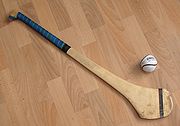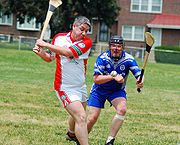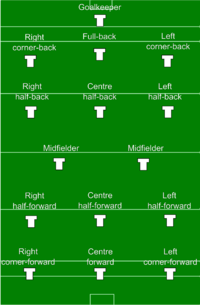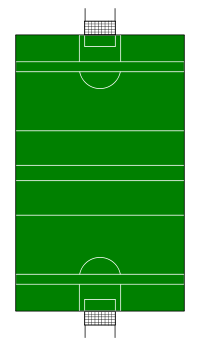| This Week’s Topic… | |

Best viewed in
|
Hurling Not to be confused with the aftereffects of eating Haggis, Hurling (in Irish, iománaíocht or iomáint) is an outdoor team sport of ancient Gaelic origin, administered by the Gaelic Athletic Association, and played with sticks called hurleys and a ball called a sliotar. The game, played primarily in Ireland, has prehistoric origins and is thought to be the world's fastest field team sport in terms of game play. One of Ireland's native Gaelic games, it shares a number of features with Gaelic football, such as the field and goals, number of players, and much terminology. There is a similar game for women called camogie (camógaíocht). Hurling was said to be played in ancient times by teams representing neighboring villages. Villages would play games involving hundreds of players, which would last several hours or even days. Hurling is older than the recorded history of Ireland. It is thought to predate Christianity, having come to Ireland with the Celts. It has been a distinct Irish pastime for at least 2000 years. The earliest written references to the sport in Brehon law date from the fifth century.
The object of the game is for players to use the hurley to hit the sliotar between the opponents' goalposts either over the crossbar for one point, or under the crossbar into a net guarded by a goalkeeper for one goal, which is equivalent to three points. The sliotar can be caught in the hand and carried for not more than four steps, struck in the air, or struck on the ground with the hurl. It can be kicked or slapped with an open hand (the hand pass) for short-range passing. A player who wants to carry the ball for more than three steps has to bounce or balance the sliotar on the end of the stick and the ball can only be handled twice while in his possession Side to side shouldering is allowed although body-checking or shoulder-charging is illegal. No protective padding is worn by players, and although a plastic protective helmet with faceguard is recommended, this is not mandatory for players over 21.Teams consist of fifteen players. Senior inter-county matches last 70 minutes (35 minutes per half); all other matches last 60 minutes (30 minutes per half). For age groups of under-13 or lower, games may be shortened to 50 minutes. Timekeeping is at the discretion of the referee who adds on time in lieu of stoppages at the end of each half. If a knockout game finishes in a draw, a replay is played. If a replay finishes in a draw, 20 minutes extra time is played (10 minutes per half). If the game is still tied, another replay is played.
Hurling is played on a pitch 137 - 145 m long and 80 - 90 m wide. The goals at each end of the field are formed by two posts, which are usually 6 m high, set 6.4 m apart, and connected 2.44 m above the ground by a crossbar. A net extending in back of the goal is attached to the crossbar and lower goal posts. The same pitch is used for Gaelic football; the GAA, which organizes both sports, decided this to facilitate dual usage. Lines are marked at 13 m, 20 m and 65 m and 45 m in Gaelic football from each end-line. Shorter pitches and smaller goals are used by under-13s and younger. |



